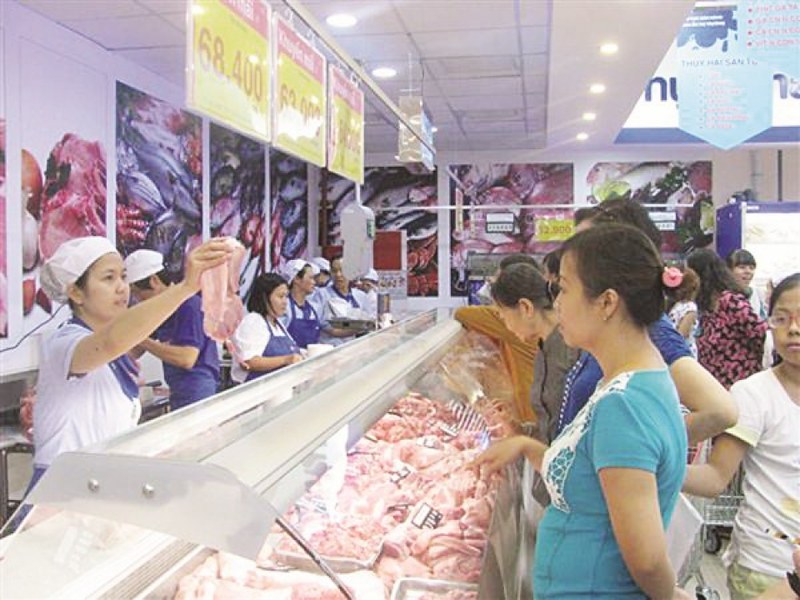Import tariffs from 2018 to 2022 will continue to further cut down
VCN- Recently, the Ministry of Finance finalized and announced the draft of 10 decrees on Vietnam’s Special Preferential Tariff to implement Free Trade Agreements (FTAs) with some countries for broad opinions before submitting the Government to issue. These tariffs have a roadmap to be applied from 2018 to.

Multi-tariffs will be 0%
Ten types of the tariffs submitted by the Ministry of Finance include: ASEAN, Japan, ASEAN, India, ASEAN, Australia, New Zealand, ASEAN, Korea, ASEAN, China, Vietnam and Korea. – Japan, Vietnam – Chile, Vietnam – Eurasian Economic Coalition.
In the Ministry of Finance’s proposal, there are a lot of types of tariffs being 0% from 2018. Some taxable items also decreased 0% by 2022. Some commodities keep unchanging for five years (2018 – 2022), but among of them is not much, most of which are not committed to abolishing taxes such as alcohol, beer, gasoline, cars, sugar, meat by-products, cement, etc.
In fact, from 2015, the number of imports into Vietnam has been reduced tariffs under the commitments of the FTA. Many commodities under the tariff schedule have been lower and faster than the WTO commitments and preferential Import tariffs (MFN). However, with a series of Decrees on preferential tariffs between the above markets, when signed by the Government, the period 2018-2022 will further cut down and progressively remove tariffs to 0% for many commodities by 2022. For example, for the ASEAN-Japan tax rate (AJCEP), the draft regulations, maintaining low tariffs, are about 0% from 2018. Some The import tax rate of 5% in 2018 will be reduced to 0% from 2019, not waiting until 2022. ASEAN-India tax rate (AIFTA), some fresh goods of animals will be from 1% to 3% in 2018 and will be 0% from 2019. Animal meat, the 3% tax rate in 2018 will be reduced to 0% from 2019; The 15% tax rate in 2018 will be reduced from 10% to 9% in 2019-2021 and 0% in 2022. Some fish are subject to tax rates ranging from 7.5% to 15% Similarly, in the VKFTA tariff (Vietnam – South Korea), meat from 10% to 20% (in 2018) will be reduced to 0% by 2022. Alcohol, beer from 50% – 55% (2018), also remove the tax by 2022, …
Increase domestic revenue to offset revenue
Vu Nhu Thang, Director General of the International Cooperation Department of the Ministry of Finance, said that at the current time, it is necessary to issue new decrees and amend the list Import tariffs to implement intra-ASEAN commitments by the end of 2016, the Government issued Resolution No. 109/2016 / NQ-CP approving the ASEAN Harmonized Tariff Nomenclature 2017 (List AHTN 2017 ). At the same time, Vietnam also needs to shift the preferential import tax rate due to the change in the list of import tariffs under the new list of export goods (AHTN 2017)
According to Thang’s analysis, many changes are made in the upcoming tariffs. For example, in the ATIGA Tariff (Vietnam’s Special Preferential Tariff Schedule for the Implementation of the ASEAN Goods Trade Agreement, 2018-2022). According to the commitment schedule, the average tariff of 2015 tariff schedule in 2017 is 0.96%, while the period 2018 – 2022 is 0.06% (down 0.9% over the period 2015 – 2017). As committed, Vietnam has basically completed the elimination of tariffs within ASEAN by 2015, the 7% of tariffs will be flexible until 2018. In addition, about 3% for types of the tariff of ATIGA are excluded from commitments and removed tariffs.
However there are many changes, the evaluation of representatives of International Cooperation Department will not affect the implementation of commitments under the signed agreements while ensuring the stability of the special preferential tariffs when these decrees are issued and come into use. Moreover, since the tariff is built on the basis of strict adherence to the commitments, the tariff rate is substantially unchanged from the commitment schedule and the average tariff rate is expected to decrease for each year in the period. Sections 2018 – 2022 are also calculated.
Assessment of the effect of decreasing revenue, Nguyen Minh Tan, Deputy Director of the State Budget Department of the Ministry of Finance, said that as early as 2017, the Ministry of Finance had calculated the impacts of FTAs. The state budget from the time the budget is drafted for submission to the National Assembly for approval by the end of 2016. All options are in the plan of the Ministry of Finance. When joining in the FTA, the tariff preferences mean that the inputs of the economy will be reduced, and business efficiency will increase, leading to an increase in domestic taxes that offset the reduction in import taxes. Vietnam’s domestic revenues have risen dramatically from 56% of total budget revenues to 75% in 2016 and are expected to increase further. This increase will be offset by income tax from import tax.
Source: customsnews.vn
